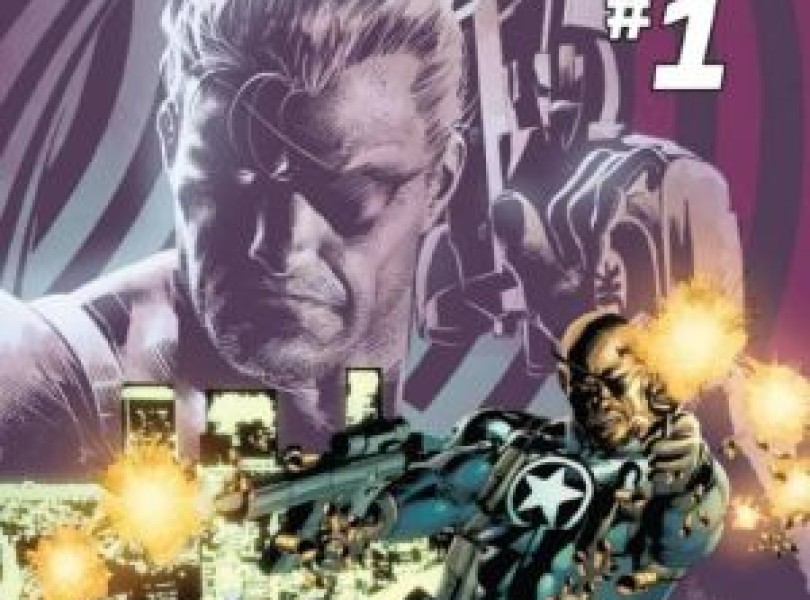A tale of two Furys.
The latest S.H.I.E.L.D. 50th Anniversary special focuses on the top cop himself – Nick Fury. And not just one version of Fury, but both the classic version and his Samuel L. Jackson-inspired son in one time-travel-induced team-up. This issue works well as far as exploring the troubled father/son relationship these two share, but less so when it comes to exploring America’s ongoing racial tension.
The fact that the book isn’t more successful in terms of the latter element is disappointing considering that this issue also marks writer David F. Walker’s Marvel debut. Walker has done a fine job of blending superheroics and sociopolitical conflicts in DC’s new cyborg series. But here, perhaps because of the limited scope of the issue, the racial elements feel very perfunctory. There’s no depth or insight to the scenes of race riots unfolding in 1965 and 2015. The fact that Walker relied on the inherently goofy Hate-Monger for his choice of villain doesn’t help. But more than that or the very “on the nose” ending, what hurts the story is Walker’s portrayal of the elder Fury as a naive idealist who can’t seem to grasp the idea that Civil Rights-era America isn’t one big, happy melting pot of tolerance. If any Marvel character is going to have a pragmatic view of the world and the people in it (even at this early age), it’s Nick Fury.

Again, it’s mainly the dynamic between the two Furys that gives the issue its weight. Walker taps into their shared history nicely, with the younger Fury coming to terms with the fact that he never really knew his biological father and finds himself, against all odds, actually liking the man. In that sense, the decision to portray Fury Sr. as a younger, more idealistic man has its benefits. There’s also a poignant reflection on the idea that time travel opens up all manner of dangerous temptations to alter the past and fix the future. It wouldn’t be at all surprising to learn that Walker’s script was influenced by the classic Star Trek episode “The City on the Edge of Forever.”
Lee Ferguson’s art isn’t terribly remarkable in terms of style or detail, but the laid-back spy ops approach suits the tone and setting of the story well. Ferguson and colorist Jason Keith are at their strongest in the early pages, as they juxtapose scenes set in 1965 and 2015 together and explore the parallel conflicts of father and son.
There’s a lot of untapped potential when it comes to exploring the relationship between the aging Nick Fury and his up-and-coming S.H.I.E.L.D. agent son. This issue taps into that potential, but it doesn’t handle the racial elements of the conflict with much depth or nuance.



